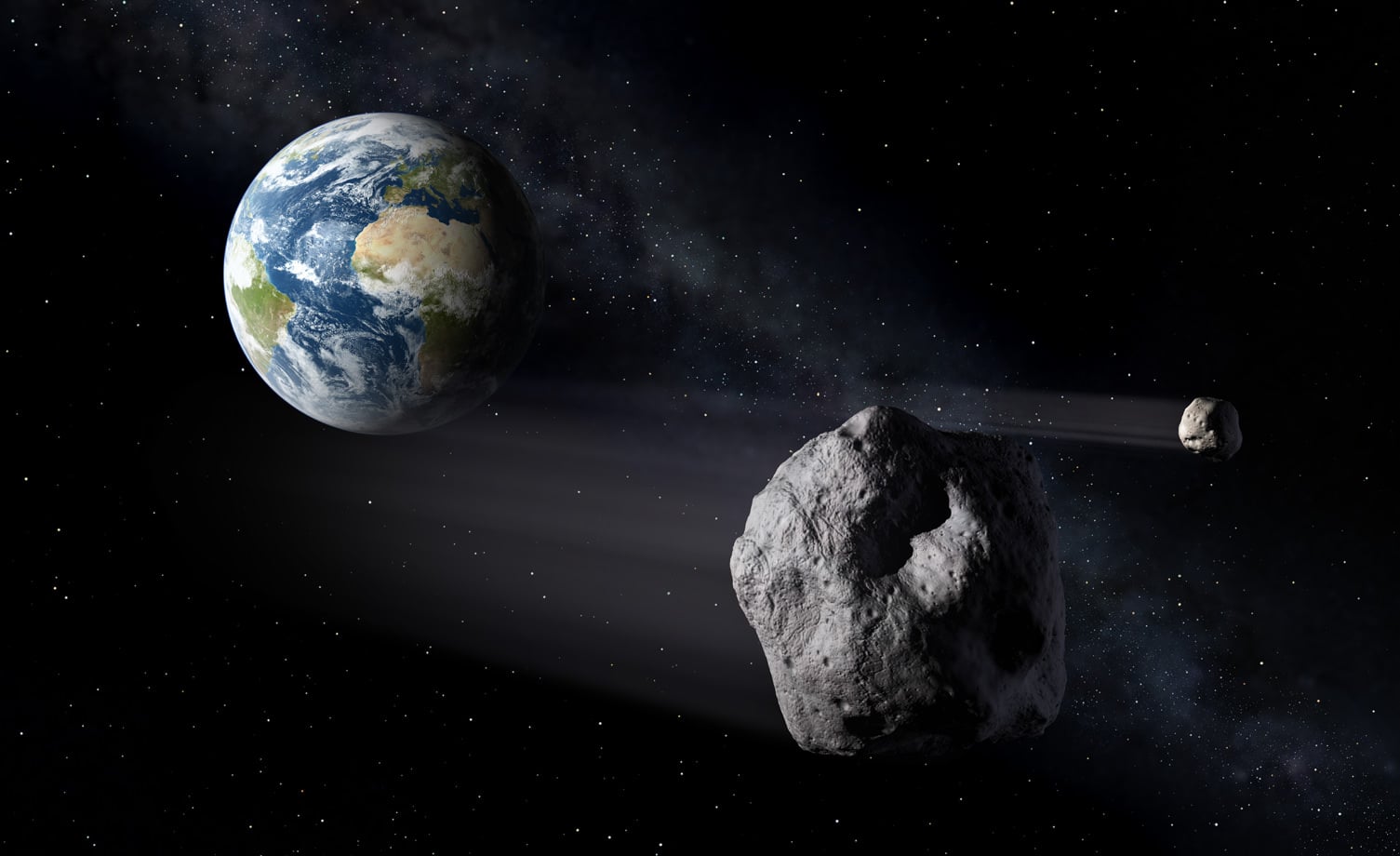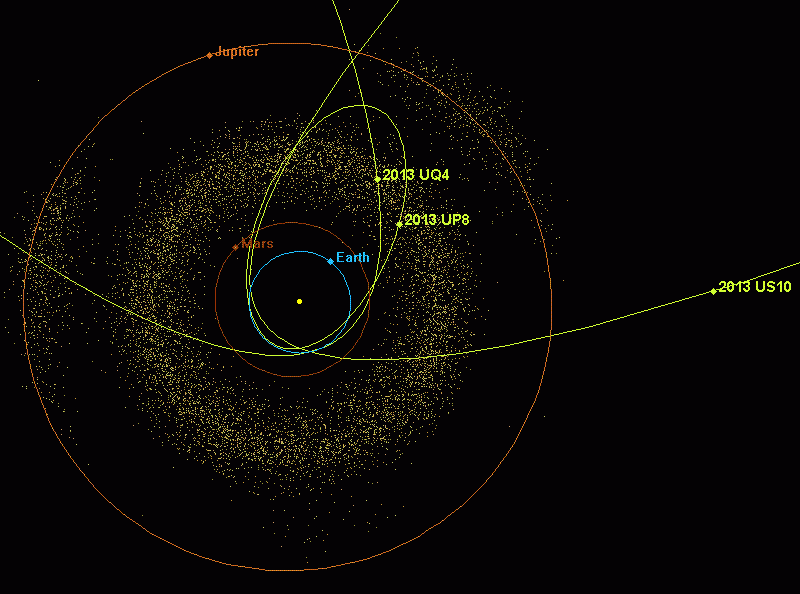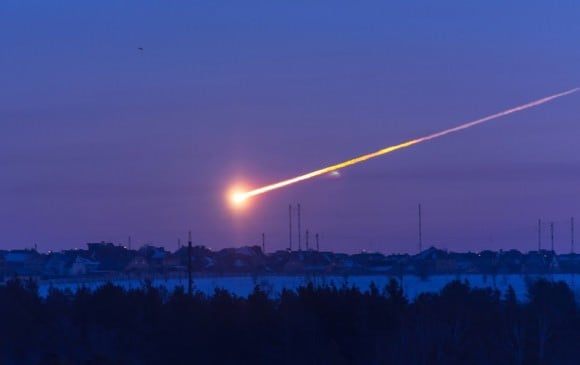Of the more than 600,000 known asteroids in our Solar System, almost 10 000 are known as Near-Earth Objects (NEOs). These are asteroids or comets whose orbits bring them close to Earth's, and which could potentially collide with us at some point in the future. As such, monitoring these objects is a vital part of NASA's ongoing efforts in space. One such mission is NASA's
Near-Earth Object Wide-field Survey Explorer
(NEOWISE), which has been active since December 2013.
And now, after two years of study, the information gathered by the mission is being released to the public. This included, most recently, NEOWISE's second year of survey data, which accounted for 72 previously unknown objects that orbit near to our planet. Of these, eight were classified as potentially hazardous asteroids (PHAs), based on their size and how closely their orbits approach Earth.
Originally launched back in 2009 as the Wide-field Survey Explorer (WISE), the spacecraft relied on its infrared telescope to look for previously undetected star clusters and main belt asteroids. In February of 2011, the mission ended and the spacecraft was put into hibernation. As of December 2013, it was reactivated for the purpose of surveying Near-Earth Objects (i.e. comets and asteroids) for the remainder of its service life.
[caption id="attachment_119934" align="aligncenter" width="580"]
The Wide-field Infrared Survey Explorer (WISE) has been scanning the entire sky in infrared light, searching for objects that could threaten Earth. Credit: NASA/JPL
[/caption]
This mission not only involves scanning for NEOs at infrared wavelengths, but also characterizing previously known asteroids and comets to provide information about their sizes and compositions. James Bauer, the mission's deputy principal investigator, explained NEOWISE's operations to Universe Today via email:
Paired with ground-based telescopes that examine space in visible-light wavelengths, the data it has provided has told us much in the past two years about asteroids within our Solar System. Since beginning its "second life", the NEOWISE mission has taken millions of images of the sky and measured more than 19,000 asteroids and comets.
[caption id="attachment_128383" align="aligncenter" width="580"]
Map showing the location of three NEOs discovered by NEOWISE in 2013 - 2013 UQ4, 2013 US10, and 2013 UPS. Credit: NASA/JPL-Caltech.
[/caption]
In addition to characterizing thousands of asteroids and identifying several new ones, the surveys revealed some interesting facts about NEOs that will make monitoring them easier, and help us mount missions to one someday. As Dr. Amy Mainzer, the principal investigator of the NEOWISE mission at NASA's Jet Propulsion Laboratory, told Universe Today via email:
Of the 19,000 asteroids studied, the mission team was able to identify 439 of them as NEOs, and further determined that eight of them can be classified as potentially hazardous asteroids (PHAs)
.
But before anyone gets to worrying that these objects might collide with us someday, it would be good to keep some statistics in mind.
For starters, since NASA and other space agencies began searching the Solar System for asteroids that have orbits that bring them close to Earth, some
14,166 NEOs have been discovered
. What's more, the vast majority (over 13,000) have only been discovered since the year 2000, and over half since 2010. Of these, roughly half (7077) measure 140 meters in diameter.
[caption id="attachment_127217" align="aligncenter" width="580"]
Picture of the asteroid that exploded over Cherlyabinsk on Feb 15, 2013. Credit: Tuvix/Youtube
[/caption]
Sounds scary, doesn't it? But not so much when you consider that of these, only 879 are large enough to ever pose a serious threat to Earth (i.e. measuring 1 km or more in diameter). And whereas small objects (i.e. those averaging 4 meters or 13 feet in diameter) strike Earth about once a year, asteroids measuring 1 km or more in diameter have been known to hit Earth at an average of only twice every one million years.
Of course, incidents like the Chelyabinsk meteorite (which measured 20 meters in diameter) remind us that even small NEOs that break up in the atmosphere can have a damaging effect - which in this case included 1,491 reported injuries and $33 million USD in property damage. However, the vast majority of the injuries caused by the airburst explosion were due to a lack of prior warning. Had the population been warned in advance, it is likely that most (if not all) of the injuries could have been prevented.
Knowing precisely where NEOs (and PHAs) are with respect to Earth, their sizes, and what paths their orbits will take, are all crucial to making sure that, in the unlikely event that any of them hit Earth, that they don't cause harm. And thanks to NEOWISE, we've now got tabs on eight more of them. And until such time as we can create some kind of orbital defense platform to shoot incoming PHAs (I'm thinking guided missiles and laser guns!) knowing is all of the battle!
And be sure to check out the new NASA movie below, which beautifully visualizes the data collected by NEOWISE so far:
Further Reading: NASA
 Universe Today
Universe Today



